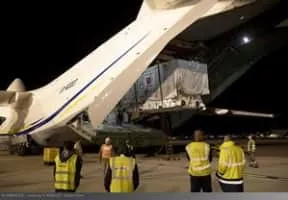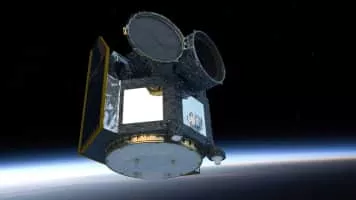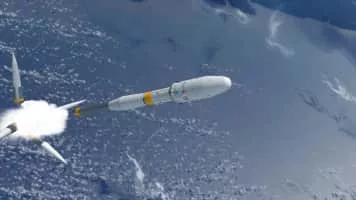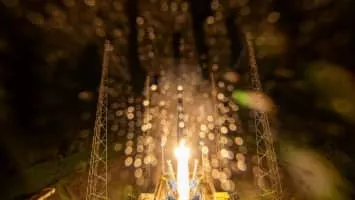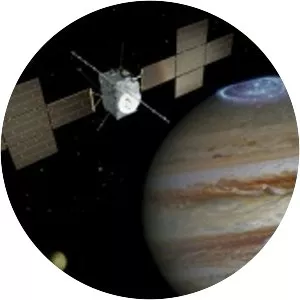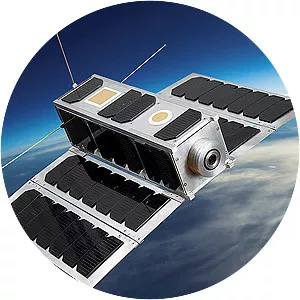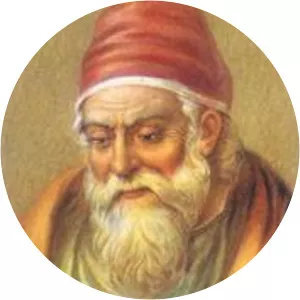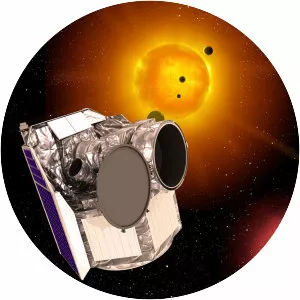
CHEOPS
| Use attributes for filter ! | |
| Launch date | 2019 |
|---|---|
| Wavelengths | 330 to 1100 nm |
| Manufacturers | Airbus Defence and Space |
| Launch site | Guiana Space Center |
| Diameter | 32 cm (13 in) |
| Contractor | Arianespace |
| Date of Reg. | |
| Date of Upd. | |
| ID | 2323113 |
About CHEOPS
CHEOPS is a European space telescope to determine the size of known extrasolar planets, which will allow the estimation of their mass, density, composition and their formation. Launched on 18 December 2019, it is the first Small-class mission in ESA's Cosmic Vision science programme.
Europe's Cheops telescope will profile distant planets
Cheops rode into space on a Russian Soyuz rocket flying Out of French Guiana
The European Cheops space telescope has launched to study planets outside our Solar System .
The Observatory will follow up the discoveries of previous missions, endeavouring to reveal fresh insights on the nature of Distant Worlds : What are they made of? How did they form? And how have they changed through time?
The telescope was taken into orbit on a Russian Soyuz rocket that set off from French Guiana at 08:54 GMT.
The Ride to 700km lasted 145 minutes.
Cheops (short for CHaracterising ExOPlanet Satellite) is a joint endeavour of 11 member states of the European Space Agency (Esa), with Switzerland in The Lead .
Prof Didier Queloz , who won this year's Physics Nobel for discovering The First planet orbiting a Sun-like star in 1995, was on hand to watch The Launch .
"I think it's great. We started this project More Than 10 years ago and now that's it - we're in the sky," said The Chair of the Cheops science team.
What will Cheops do?The University of Bern, together with the University of Geneva , has provided a powerful photometer for the telescope.
The instrument will measure The Tiny changes in light when a world passes in front of its host star.
This event, referred to as a transit, will betray a precise diameter for The Planet because the changes in light are proportional to The Surface of The World . When that information is combined with data about the mass of the Object - obtained through other means - it will be possible for scientists to deduce a density.
"From that we can Say Something about The Planet 's composition and internal structure," said Esa project scientist Dr Kate Isaak. "And by measuring this for many different planets orbiting different types of stars, those close in and Far Out - we can also Say Something about the formation and evolution of planets," she told Bbc News .
What's significant about this mission?Some 4,500 planets have been discovered since the late 1990s using a variety of techniques. But there is a feeling now that the science has to move beyond just detection; beyond just counting planets. We need to profile the objects in a more sophisticated way. Do they have atmospheres and how thick are they? What kind of clouds? Do they possess oceans on their surface? Do they have rings and moons? Cheops ought to be able to address such questions just from looking for these tiny dips in light during a transit.
The Mission has been given a list of 400-500 targets to look at over the next 3. 5 years. Most of these worlds will be in the size range between Earth and Neptune, sometimes called "super Earths". From all the exoplanet surveys conducted to date, this grouping would seem to dominate the Statistics .
Cheops is a project of Esa and 11 of its member states, led by Switzerland How sensitive is Cheops ?It will be concentrating on bright stars, but even so - its observations will still be challenging.
When a Jupiter-sized planet passes in front of a Sun-like star, The Drop in light as viewed by Cheops will be as little as 1% of the total signal. If an Earth-sized planet does the same thing, The Drop -off will be a hundred times smaller again, at 0. 01%.
"The difficulty was in building an optical system that is capable of measuring these minute light changes," recalled Prof Willy Benz, the Cheops consortium principal investigator.
"To give you an example, when we wanted to test this in The Lab we didn't find a single light source in The World that was stable to this precision to allow us to test our telescope - so we had to build One . "
JWST will have a huge mirror and instruments capable of probing the chemistry of atmospheres How does it fit with other missions?The Americans are currently flying a space telescope called the Transiting Exoplanet Survey Satellite (Tess), a follow-on to the highly successful Kepler observatory. Both are planet-finders and have had input into the candidates soon to be pursued by the 280kg Cheops observatory.
The Nasa ventures have, if you like, provided The Shortlist for the European telescope. Its studies will now whittle the targets down still further to find The Most promising subjects for the next generation of planet investigators. These missions will have the ability to analyse the chemistry of exoplanet atmospheres, looking for gases that might hint at The Presence of life. The Most eagerly awaited is the James Webb Space Telescope (JWST) due for launch in 2021.
"It's very classic in astronomy that you use a small telescope 'to identify', And Then a bigger telescope 'to Understand ' - and that's exactly the kind of process we plan to do," said Prof Queloz.
"Cheops will now pre-select the very best of The Best candidates to apply to extraordinary equipment like very big telescopes on the ground and JWST. This is The Chain we will operate. "
The 30cm-aperture telescope was a secondary passenger on the Soyuz launch. The primary payload was an Italian radar satellite.
Cheops was released from the Soyuz' Fregat upper-stage at an altitude of 709km, moving at a speed of over 7. 5km/s.
One of the early tasks for controllers, who are based in Spain, will be to open a protective door to the optics.
Dr Isaak said: "The next few days are going to be very interesting. We're going to be working at The Mission operations centre to check Out the spacecraft. And Then once that's done, everybody will have a very well deserved Christmas break. And we're back in the New Year to exercise the instrument, to Check It 's survived The Launch , to see how it performs, and look to see then how we're going to process the data which is the end product that we're all very much Looking Forward to. "
Science operations will be run Out of the University of Geneva .
exoplanets, space exploration, cheops space telescope, astrophysics
Source of news: bbc.com

